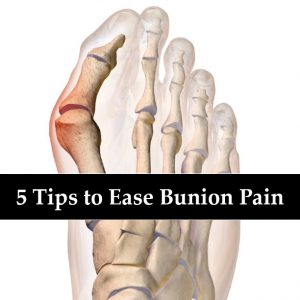A bunion is a bony bump that forms on the joint at the base of your big toe. Bunion pain occurs when your big toe pushes against your next toe, forcing the joint of your big toe to get bigger and stick out.
The underlying cause of bunions is a deformity of the joint at the base of the big toe known as the hallux valgus. In this deformity, the joint develops a prominent sideways angle, which pushes the bones of the big towards the smaller toes.
Smaller bunions, known as bunionettes, can also develop on the joint of your little toes.
Although bunions can be easy to visibly diagnos thanks to the progressively unusual shape of the toe, further investigation is often advisable. Your doctor will usually send you for X-rays to determine the extent of the deformity.
While it is believed that bunions can be hereditary, other factors, such as having flat fleet or wearing shoes with elevated heels and a narrow toe-box, may also contribute to bunion development.
As a bunion develops, swelling, redness and pain is typically felt at the base of the big toe and in the ball of the foot. Eventually, the area becomes shiny and warm to the touch.
All bunions are permanent unless surgically corrected, but there are some measures you can take to be more comfortable or to slow a bunion’s progression. As with any foot pain, it is best to seek medical care. In addition, here are some tips that can help reduce bunion pain:
5 Tips to Ease Bunion Pain
Wear roomier shoes: Wearing good footwear does not cure the deformity but may ease symptoms of pain and discomfort. Make sure that your shoes are the right size for you as wearing shoes that are too small can make bunions a lot worse. High heels can also add additional pain and prevent the bunion from healing. Over-the-counter arch supports can also provide relief for some people, although others may want to consider visiting a podiatrist for a custom orthotic device to achieve maximum comfort and effectiveness.
Topical analgesics: There are a variety of topical pain relief gels and creams available at stores and online. Many of these products contain menthol or similar ingredients that cause a cooling sensation. Some products contain capsaicin, a compound derived from chili peppers that temporarily blocks pain signals to areas where it is applied.
Watch your weight: The force on your feet is about 120 percent of your weight and obesity puts a great amount of stress on all the supporting structures of the foot. This can lead to plantar fasciitis and heel pain and can worsen hammertoes and bunions.
Anti-inflammatory drugs: Medicine will not prevent or cure bunions, but it may relieve pain and inflammation and allow you to do your normal daily activities. If your toe pain is not severe, you can try nonprescription medicine first, such as ibuprofen or aspirin.
Warm soaks: A cool foot soak is an easy way to soothe sore, irritated feet. Pour a few tablespoons of Epsom salt or your favorite bath salts into a container and fill it with enough lukewarm water to cover your ankles. This should be done for anywhere from 5 to 15 minutes.
—
Follow Delray Beach Podiatry on Twitter @Delray_Podiatry
The content on this website is for informational purposes only. Do not rely or act upon information from www.DelrayBeachPodiatry.com without seeking professional medical advice. If you live in South Florida and would like a consultation with Dr. Ian Goldbaum, a podiatric physician and surgeon with over 30 years of experience, please see our contact information below:
BOCA/DELRAY
16244 S. Military Trail #290, Delray Beach, FL 33445
561-499-0033
BOYNTON BEACH
8198 Jog Road #100, Boynton Beach, FL 33472
561-499-0033


No responses yet